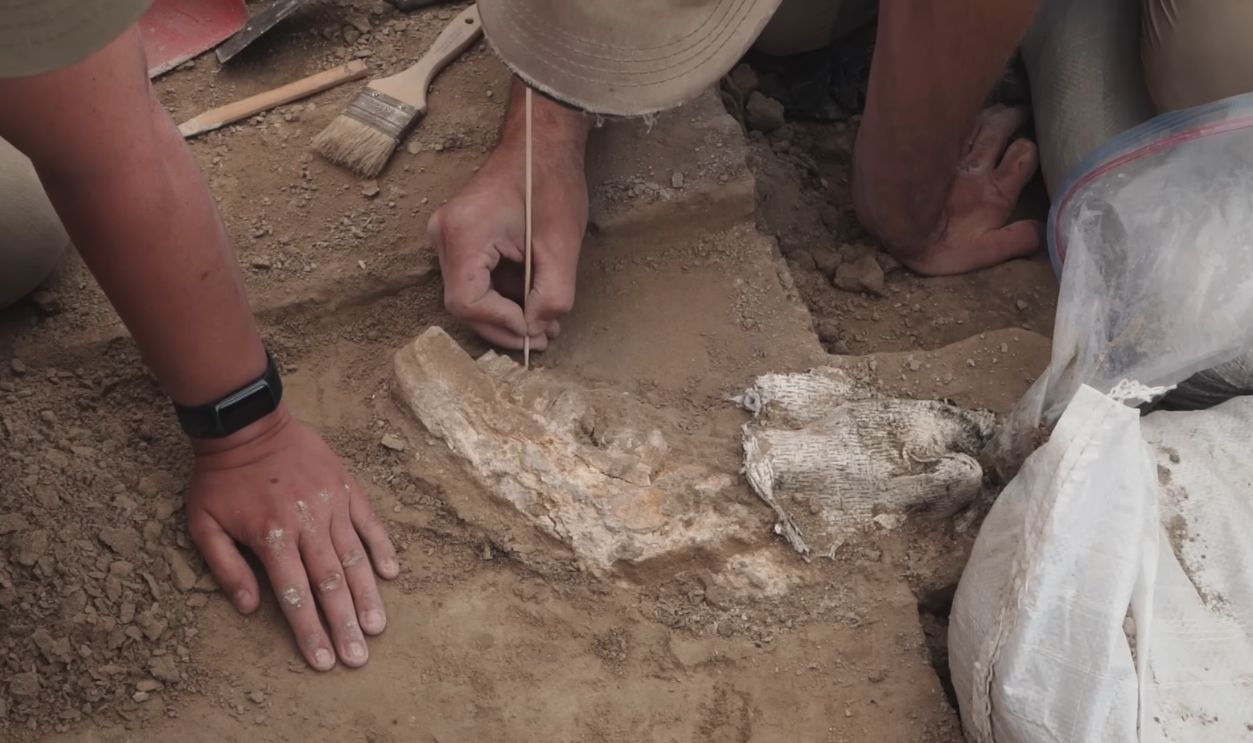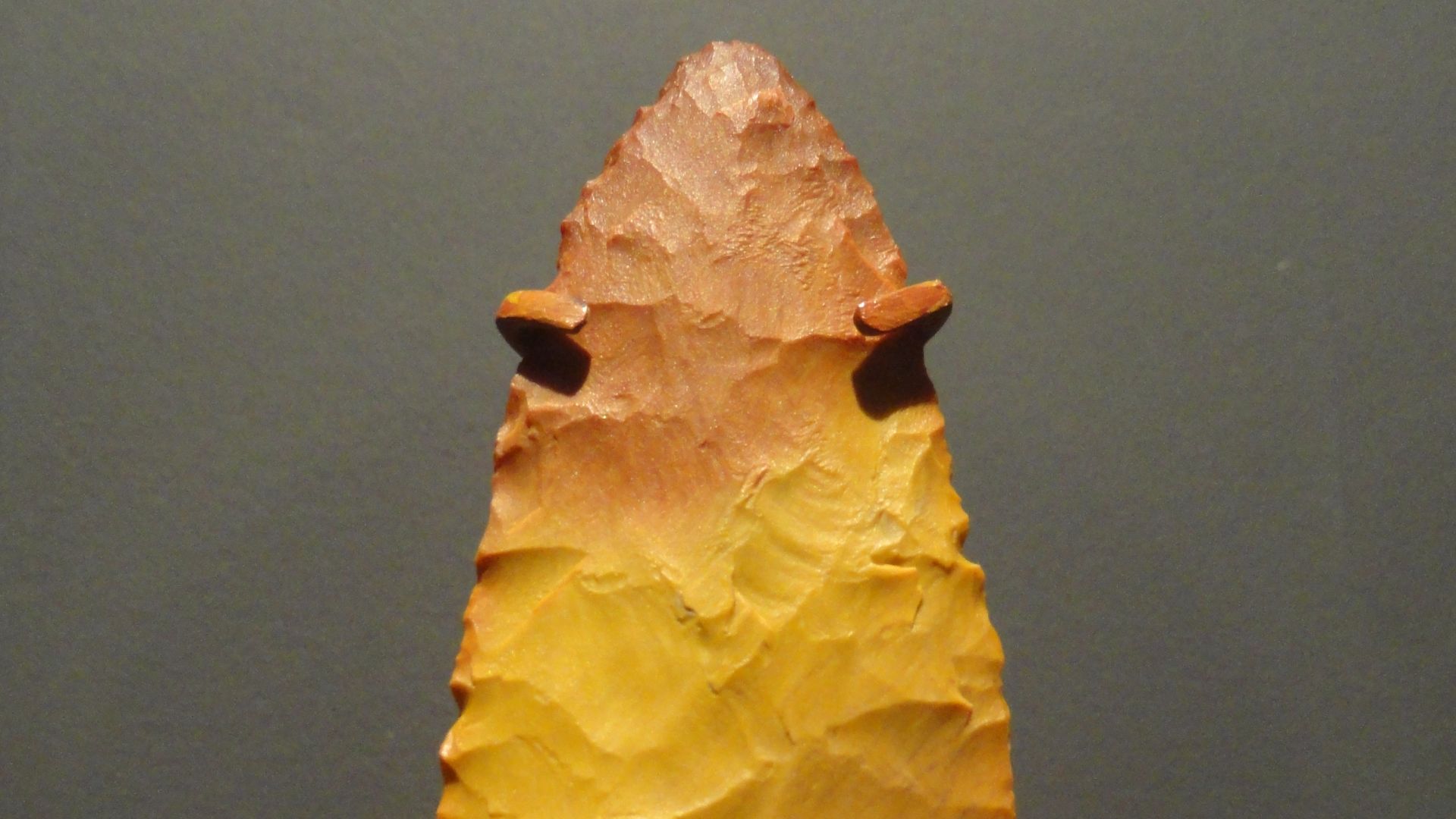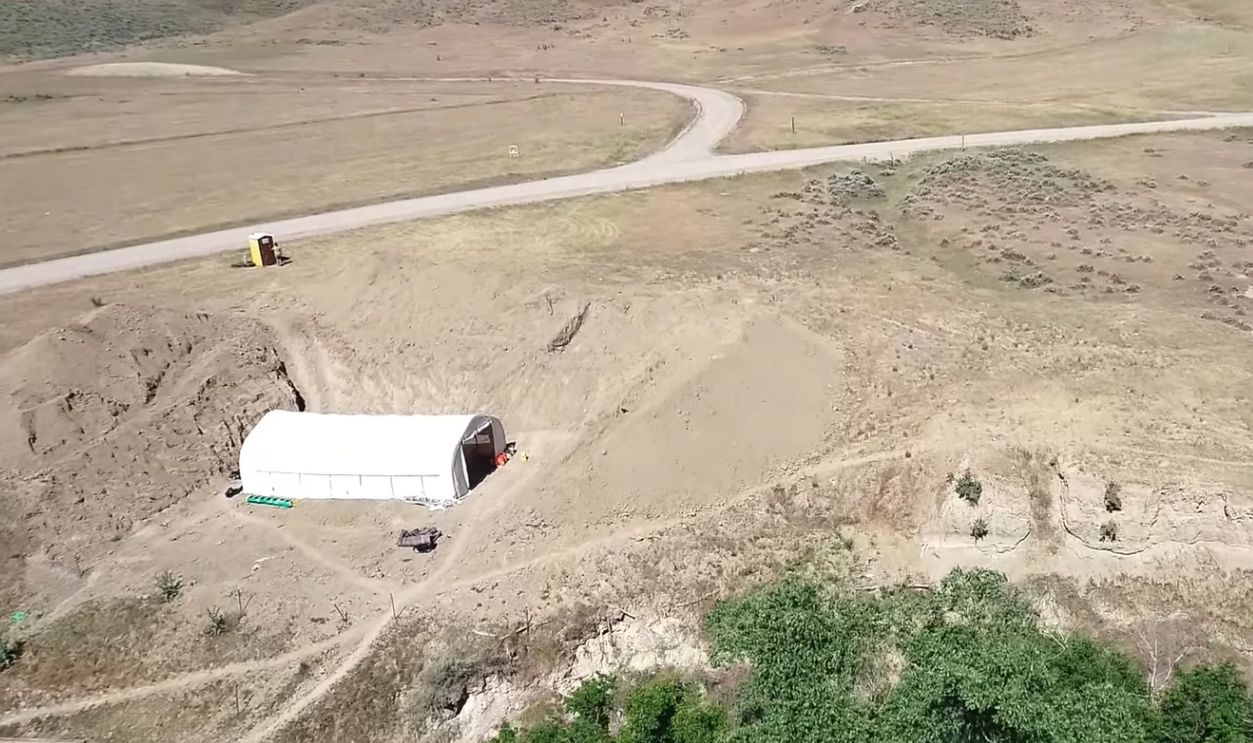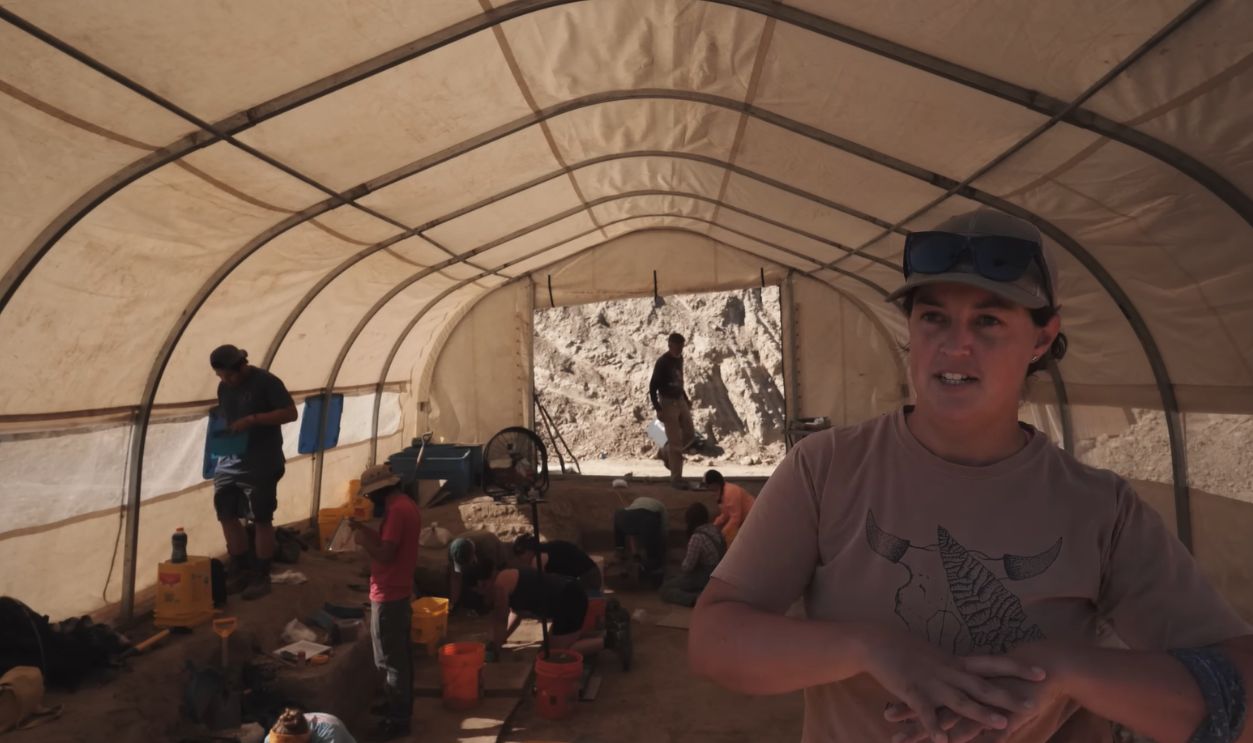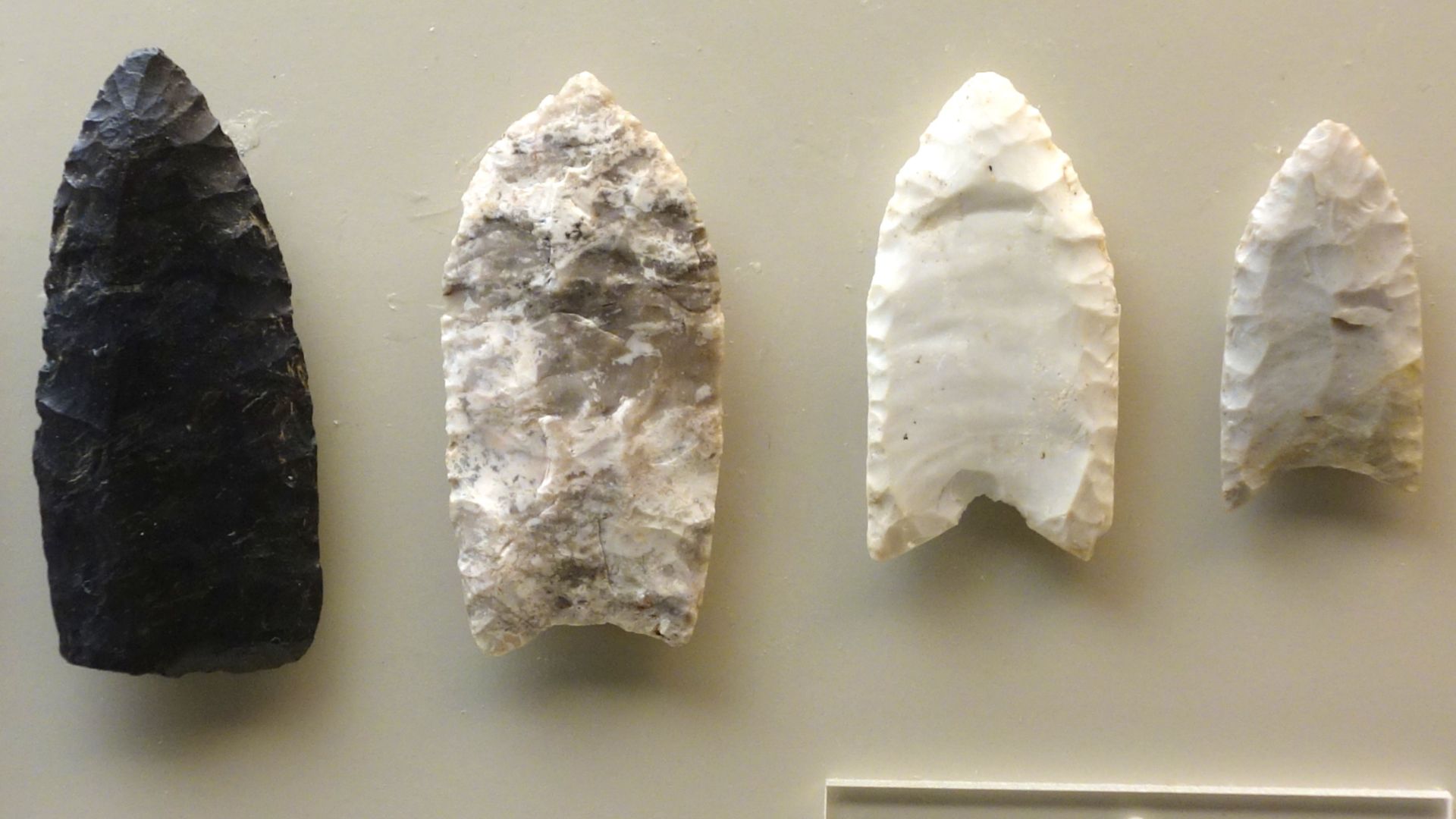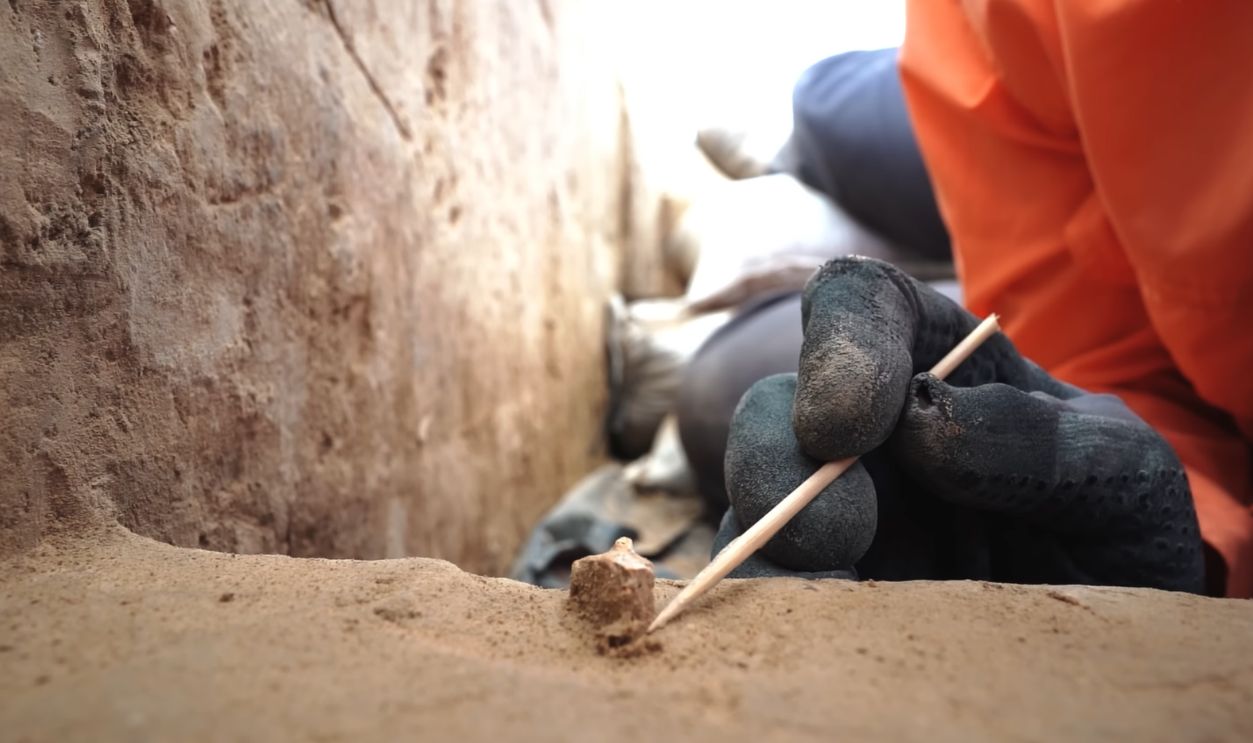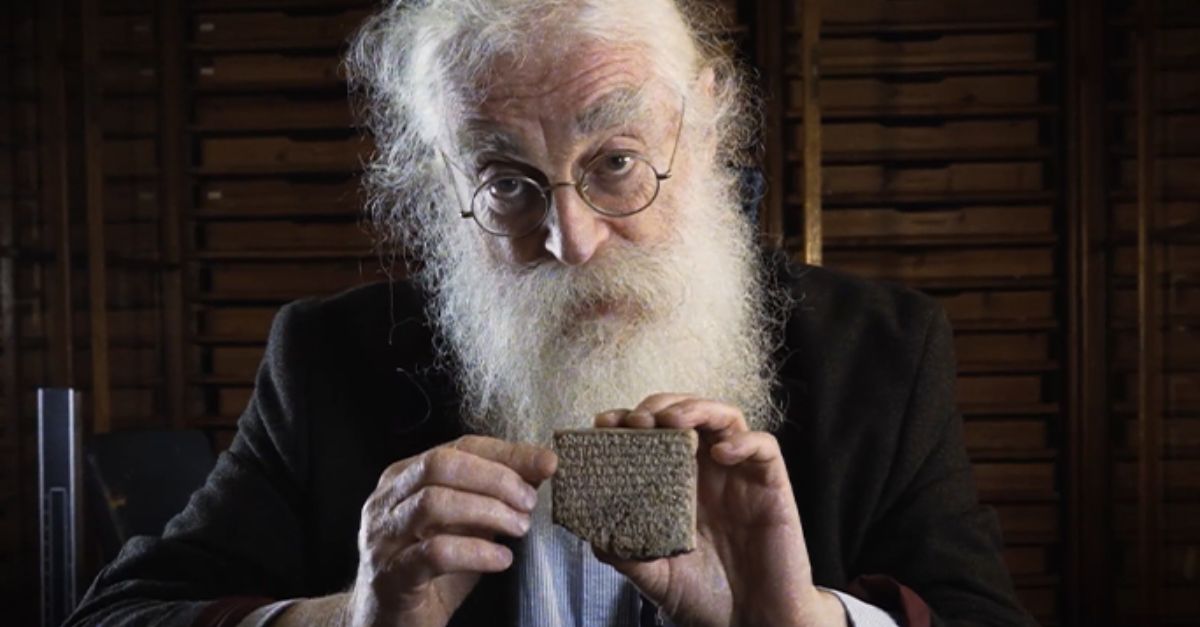A Snapshot From The Ice Age
Tucked into the windswept plains of eastern Wyoming lies one of North America’s most revealing archaeological sites: the La Prele Mammoth Site. First discovered in the 1980s, this Pleistocene-era site has delivered a steady stream of discoveries, from Clovis stone tools to delicate bone needles and the oldest known bead in the Americas.

Columbian Mammoth Remains
Excavators discovered the partial skeleton of a young Columbian mammoth, a species that once roamed from the northern US to Costa Rica. This mammoth was likely butchered by Clovis people, marking a rare site of direct interaction between humans and megafauna.
A Clovis-Age Campsite
La Prele isn’t just about mammoths, it also contains an over 500-square-meter domestic area that shows repeated human occupation. Researchers found stone tools, ochre, hearths, and other cultural materials concentrated in specific clusters. These clusters are interpreted as house floors and yard spaces from Ice Age family camps.
Discovery And Rediscovery
Initially found in 1986 by avocational collectors, the site was partially excavated in the late 80s but then largely dismissed. Excavations resumed in 2014, eventually revealing just how large and significant the site truly was. More than 4,500 square meters have now been explored.
Dating Debates
Initial dating attempts were flawed due to contamination. Newer radiocarbon techniques corrected those errors. The site is now firmly dated to just under 13,000 years ago.
 Yulia Kolosova, Wikimedia Commons
Yulia Kolosova, Wikimedia Commons
Red Ochre Everywhere
One of the excavation areas was saturated in red ochre, which is a natural clay used symbolically by Clovis and other ancient cultures. This reddish hue marked the center of what researchers believe was an ancient house.
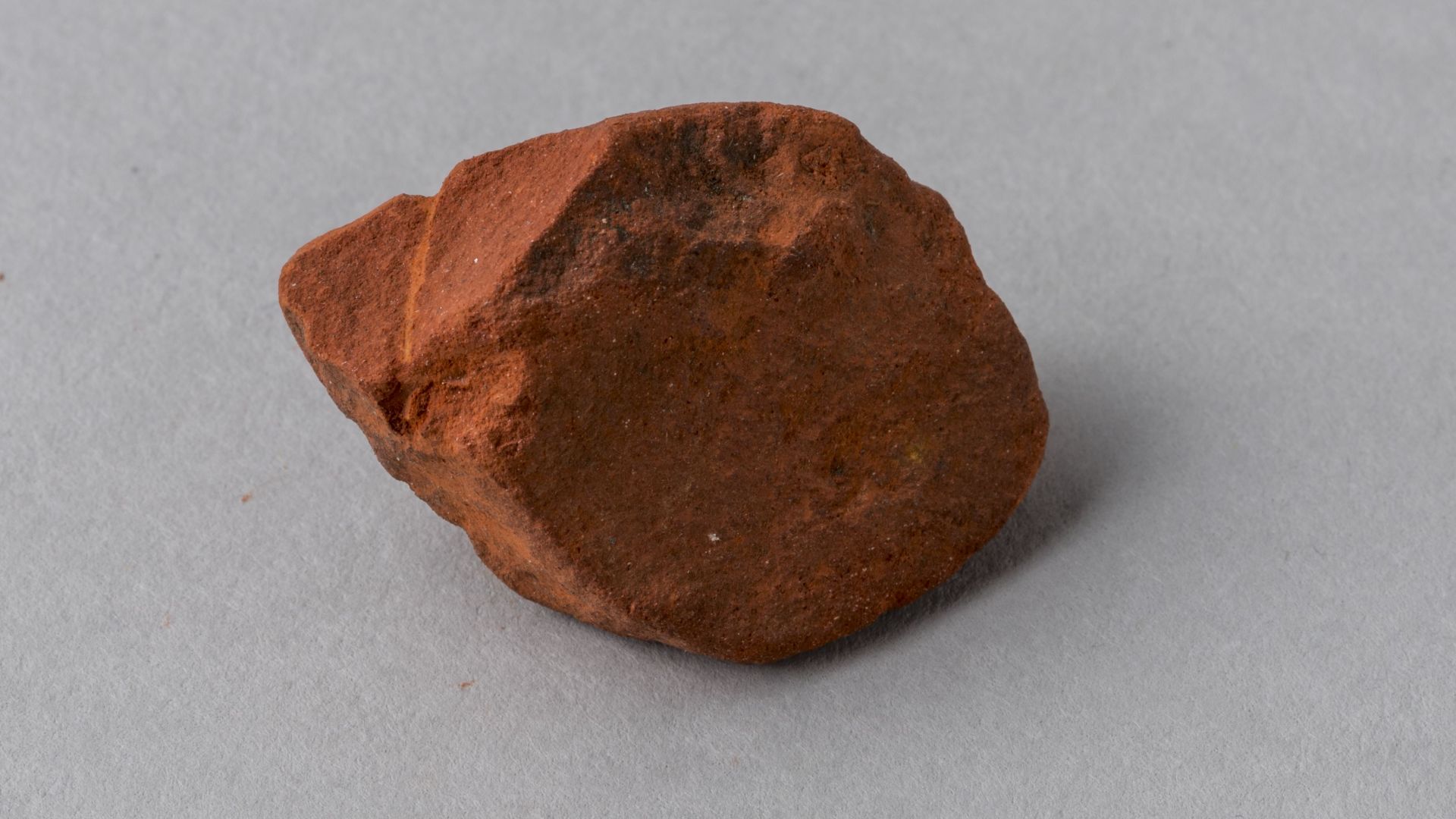 Marco Chemello (WMIT), Wikimedia Commons
Marco Chemello (WMIT), Wikimedia Commons
The Oldest Bead In The Americas
The groundbreaking discovery of a seven-millimeter-long bone bead stunned archaeologists. Made from the bone of a prehistoric hare, it dates to about 12,940 years ago. It's the oldest confirmed bead ever found in North or South America.
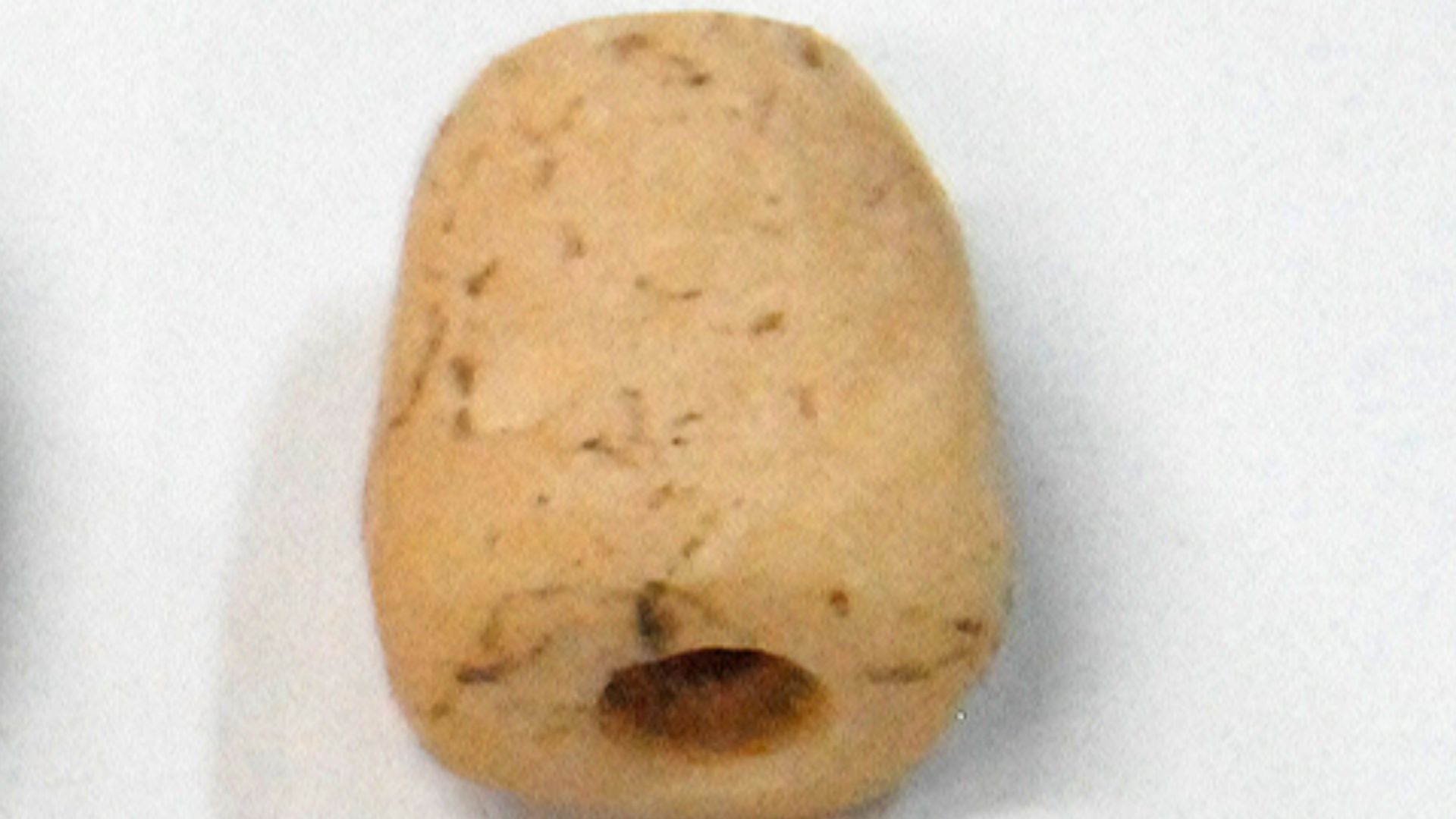 Patrick Nunn, Wikimedia Commons
Patrick Nunn, Wikimedia Commons
Clovis Culture Confirmed
Artifacts and context confirm that La Prele was used by the Clovis people, known for their distinctive stone points and widespread presence across Ice Age North America. This bead is the first direct evidence of ornamental bead-making by Clovis individuals. Before La Prele, no such ornament had been securely associated with a Clovis site.
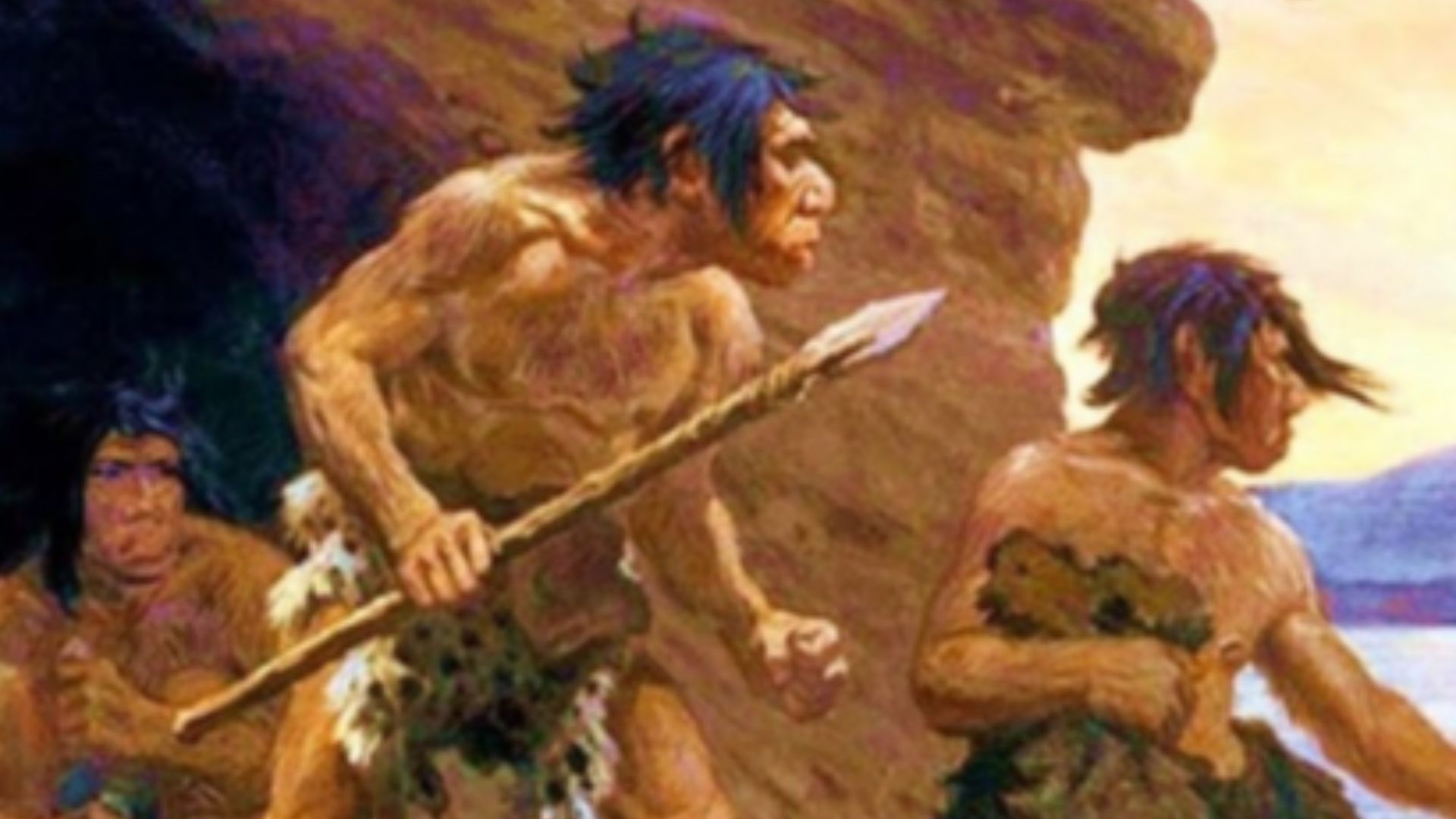 Charles Robert Knight, Wikimedia Commons
Charles Robert Knight, Wikimedia Commons
An Unexpected Material
Historians were a bit surprised that the bead was made from a hare’s limb bone, instead of from large game like mammoths or bison. This is the first secure evidence that Clovis foragers hunted and utilized hares.
 AlyonaKaptyonkina, Wikimedia Commons
AlyonaKaptyonkina, Wikimedia Commons
Microscopic Confirmation
Researchers used micro-CT scans and mass spectrometry to determine the bead's origin. The analysis confirmed that it had been deliberately shaped, with smoothed ends and fine grooves. The tests also eliminated the possibility that it had passed through a predator's digestive system.
 IAEA Imagebank, Wikimedia Commons
IAEA Imagebank, Wikimedia Commons
A Site Deep Underground
Artifacts at La Prele are buried 10 to 12 feet below the surface, requiring intense excavation. These depths help preserve the site but also make it labor-intensive to study. Each season, new discoveries emerge from beneath ancient sediment layers.
A Delicate Discovery
The bead was discovered during the careful sifting of red-stained dirt through a mesh screen. Its polish and hollow shape gave it away as something extraordinary. Once cleaned, it became clear that it was not just a bone fragment, but a crafted object.
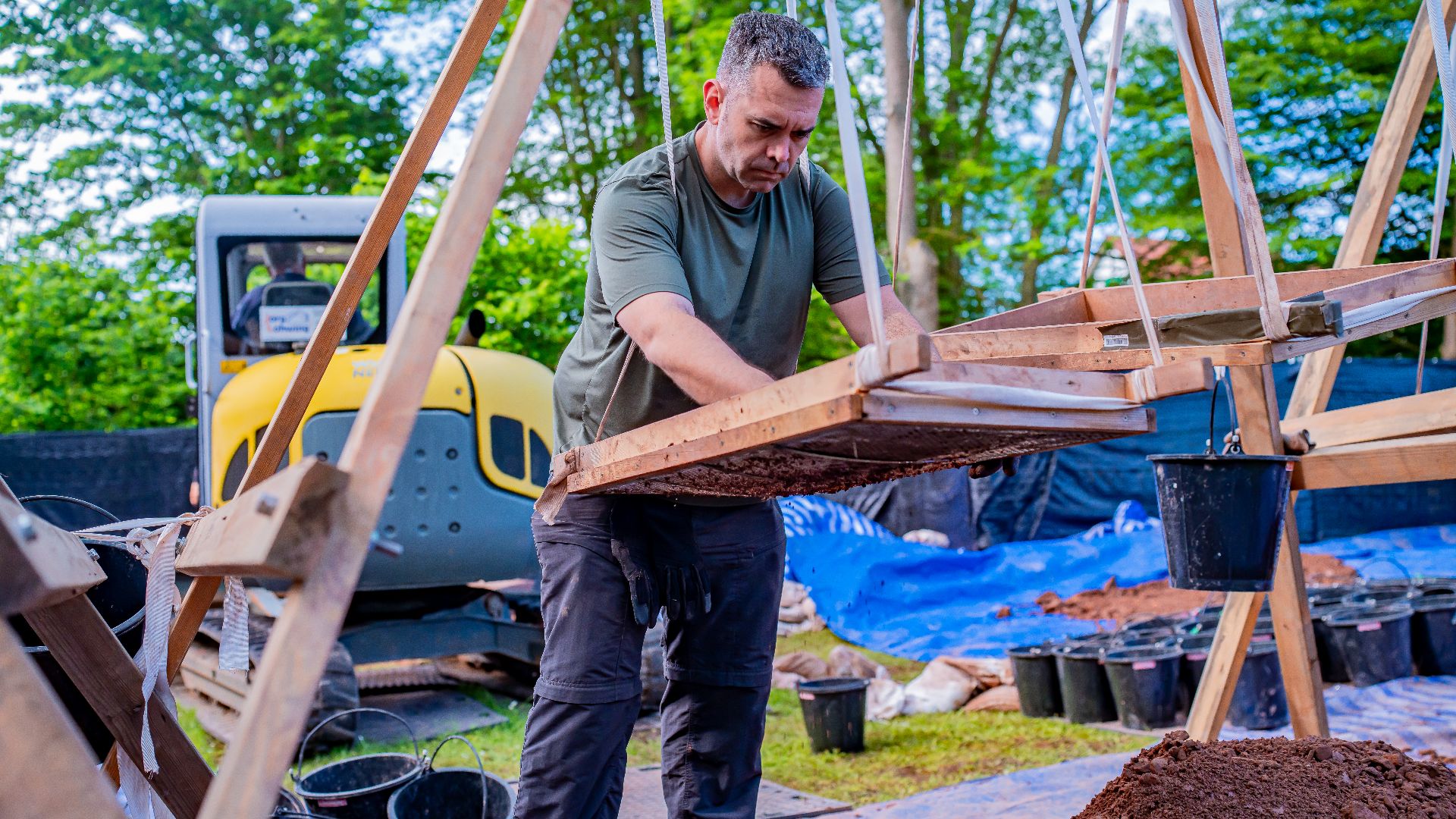 U.S. Army photo by Sgt. Edward Randolph, Wikimedia Commons
U.S. Army photo by Sgt. Edward Randolph, Wikimedia Commons
Bone Needles Galore
Excavations also uncovered 32 fragments of bone needles, a rare find from this era. They were likely used to stitch clothing from animal pelts. Their existence speaks to the complexity of Ice Age life, where survival meant making warm, fitted garments.
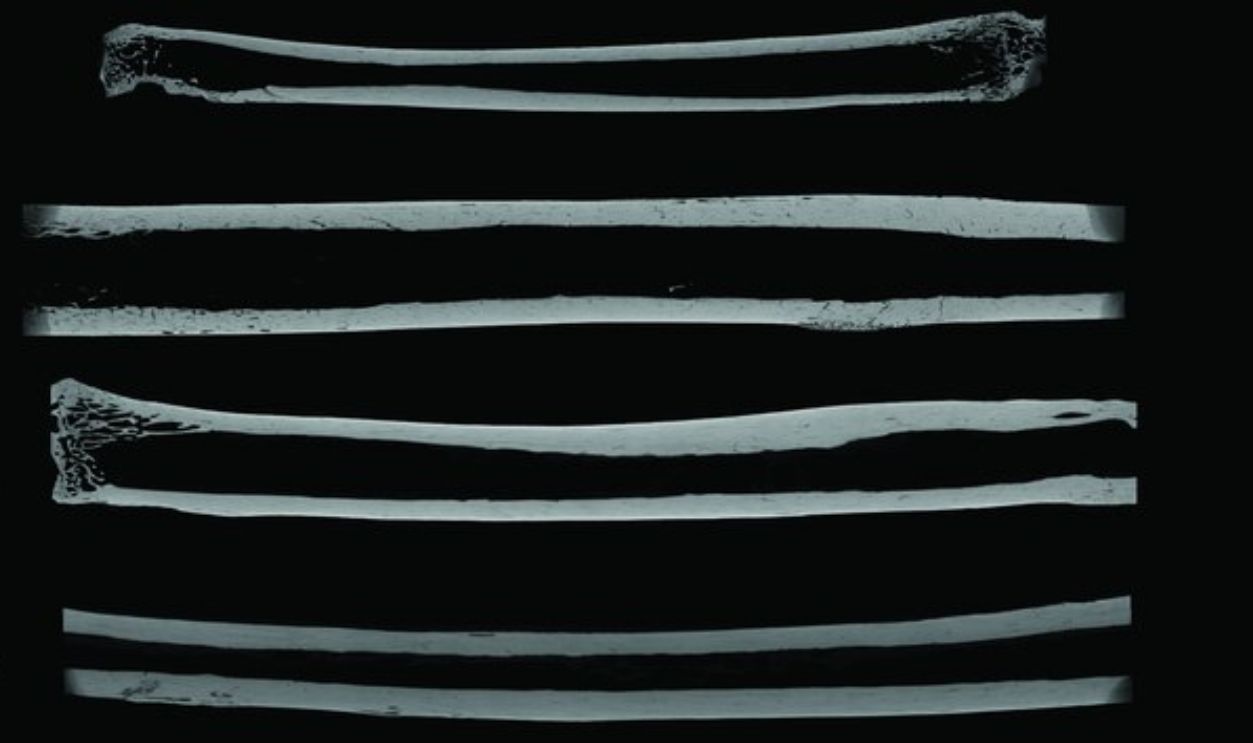 Spencer Pelton, et al., CC BY 4.0, Wikimedia Commons
Spencer Pelton, et al., CC BY 4.0, Wikimedia Commons
Unusual Bone Sources
The needles were crafted from the bones of small carnivores, including red foxes, bobcats, lynxes, and the extinct American cheetah. Using these fine bones made the needles easier to carve and more durable. It also suggests that Clovis people actively trapped animals for more than just meat.
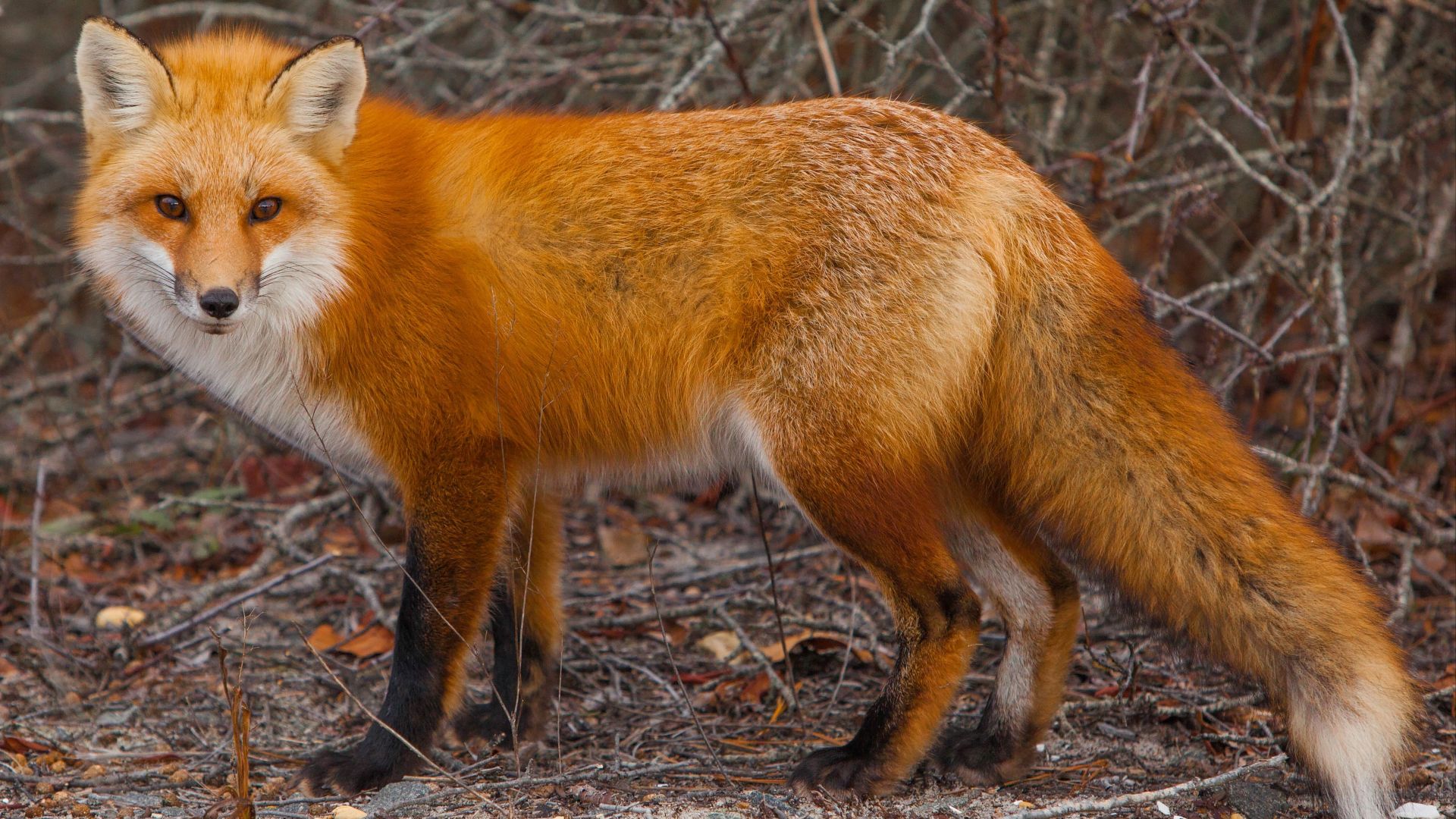 Anthony Quintano from Honolulu, HI, United States, Wikimedia Commons
Anthony Quintano from Honolulu, HI, United States, Wikimedia Commons
The Mammoth Timeline
Radiocarbon dating has placed the mammoth remains at around 12,941 years ago. Earlier samples were contaminated, but newer dating confirms this critical period in North American prehistory. This date puts La Prele squarely in the terminal Pleistocene epoch.
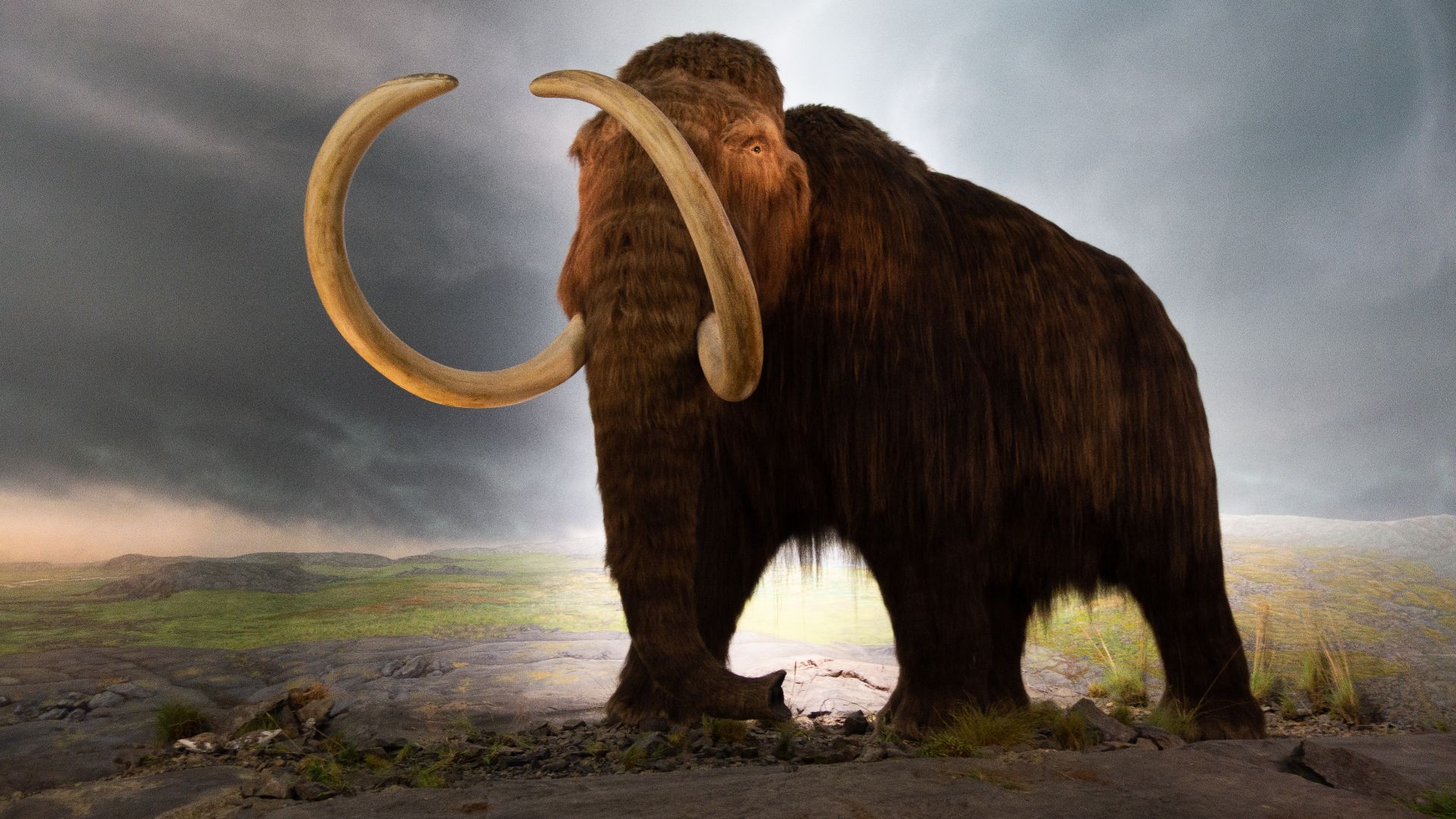 Thomas Quine, Wikimedia Commons
Thomas Quine, Wikimedia Commons
Human Touch, Not Predator
One debate was whether the mammoth was killed or scavenged. Evidence of butchering and proximity of tools now strongly support human involvement. The site is now accepted as a Clovis-era kill and camp site.
Hundreds Of Artifacts
To date, more than 1,700 stone tools and flakes have been uncovered at La Prele. These include knives, scrapers, and projectile point fragments. Some tools show microscopic wear from butchering, hide scraping, and other daily tasks.
Clovis Point Fragment
Among the most exciting finds was the distal end of a Clovis point, which is a spear tip used for hunting. While a complete Clovis point remains elusive, even fragments are incredibly rare and valuable.
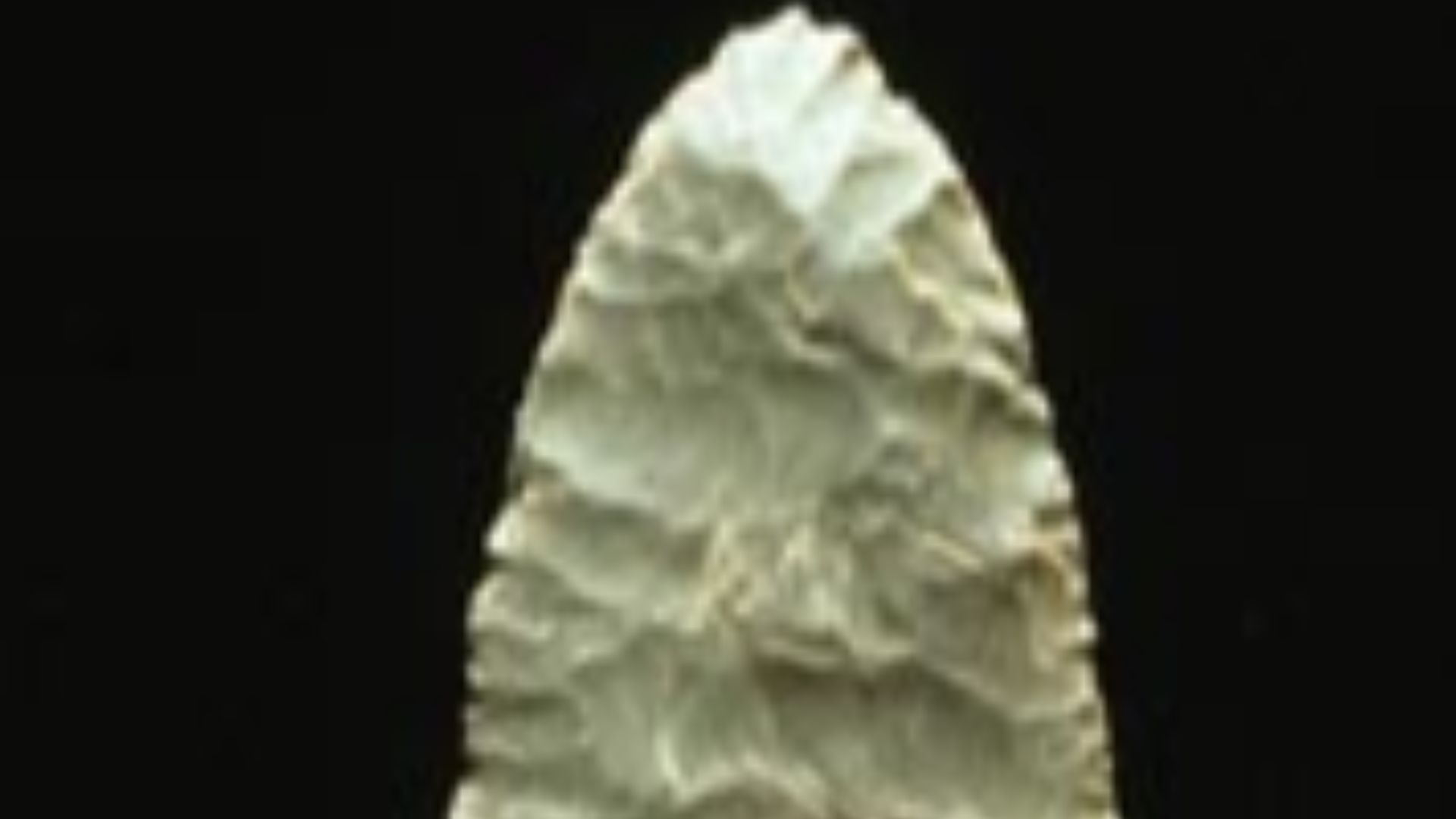 Locutus Borg, Wikimedia Commons
Locutus Borg, Wikimedia Commons
A Cultural Landmark
The site offers a rare snapshot of a month in the life of a Clovis hunting group. From kill site to campsite, La Prele has it all: meat processing, clothing repair, and ornament crafting. Such comprehensive sites are exceptionally rare in North American archaeology.
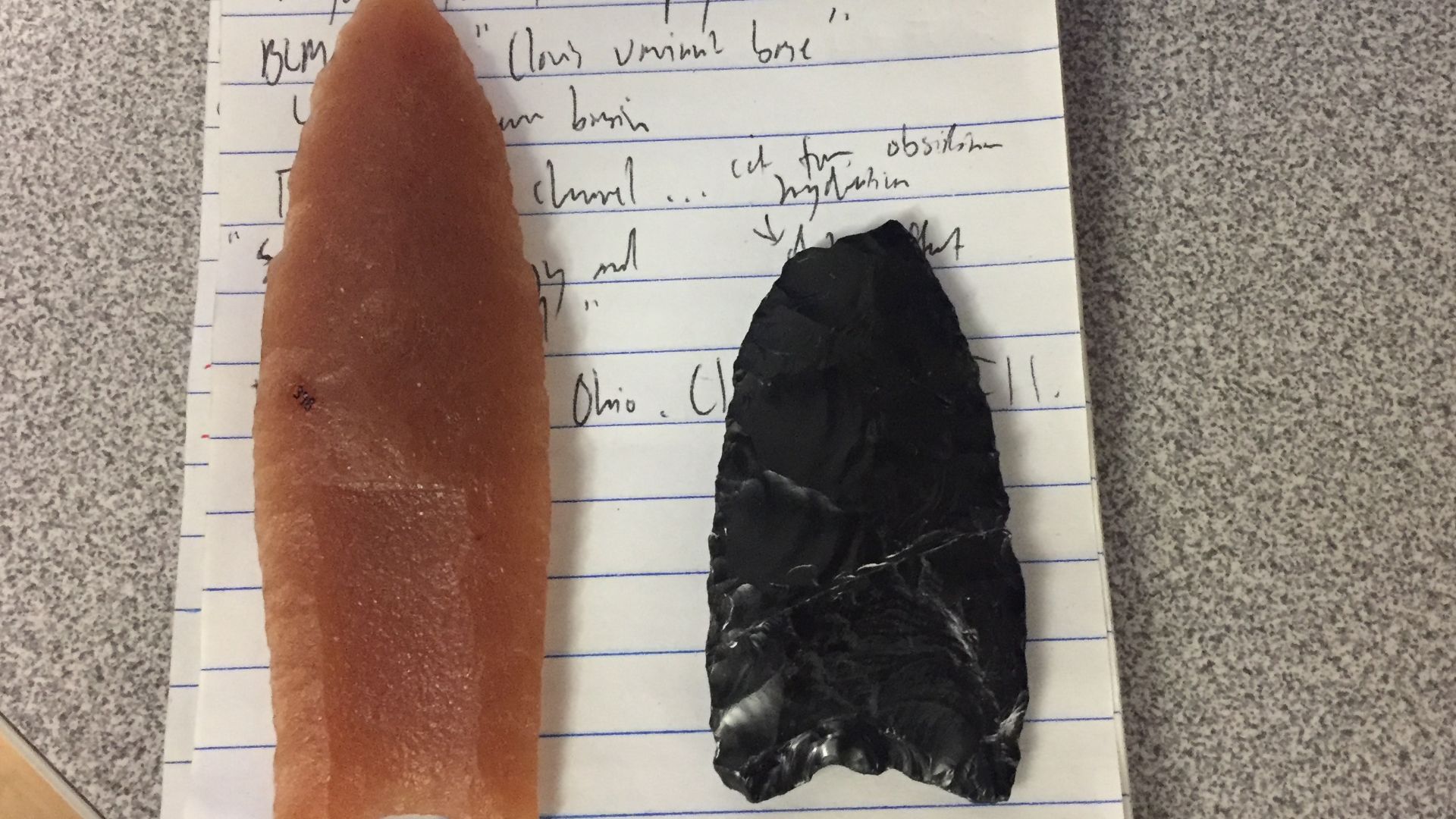 BLM Oregon & Washington, Wikimedia Commons
BLM Oregon & Washington, Wikimedia Commons
A Difficult Dig
Excavating La Prele is challenging due to the site's depth and soil density. Each layer must be meticulously removed and screened. But the rewards, like the oldest bead in the Americas, are more than worth it.
Ochre From Afar
Geochemical analysis shows the red ochre at La Prele came from the Powars II quarry, 100 kilometers (62 miles) away. This indicates long-distance transport of symbolic materials. Clovis groups were highly mobile and maintained widespread trade networks.
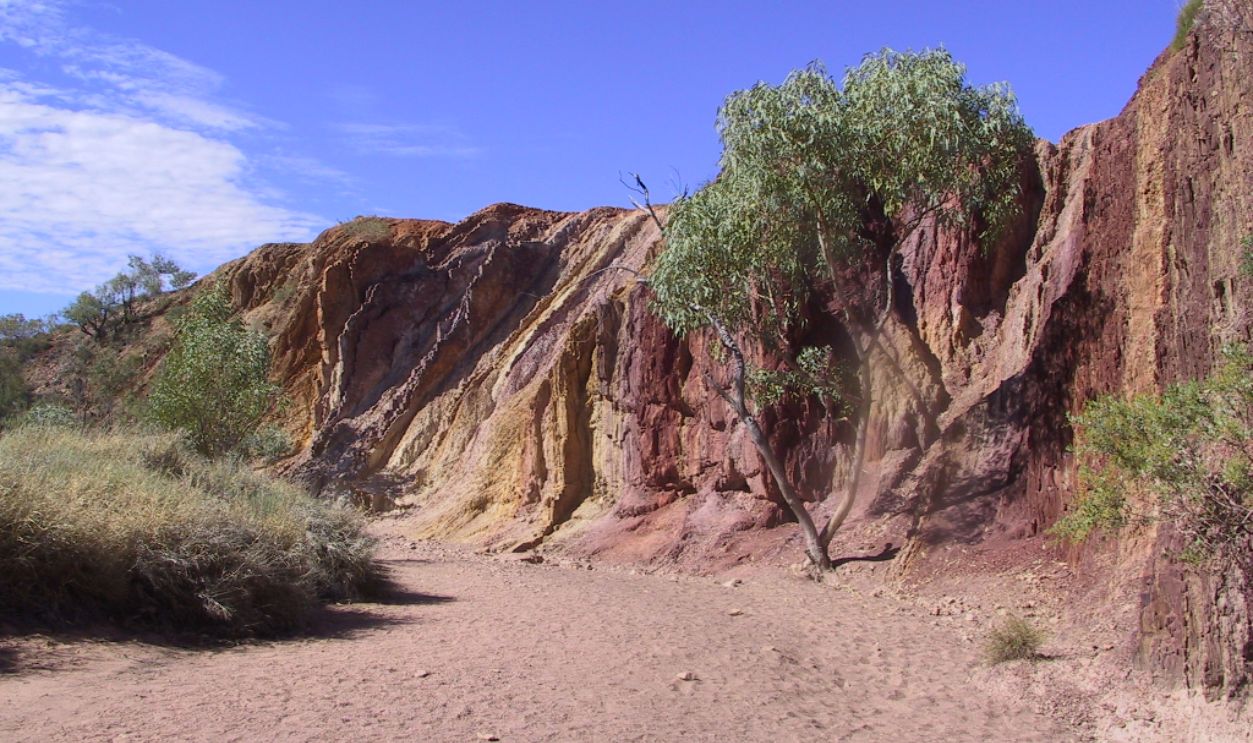 Felix Dance, CC BY-SA 3.0, Wikimedia Commons
Felix Dance, CC BY-SA 3.0, Wikimedia Commons
Temporary But Complex Homes
Structures at the site weren’t permanent houses but temporary shelters. Still, the presence of house floors, hearths, and clustered artifacts points to domestic life.
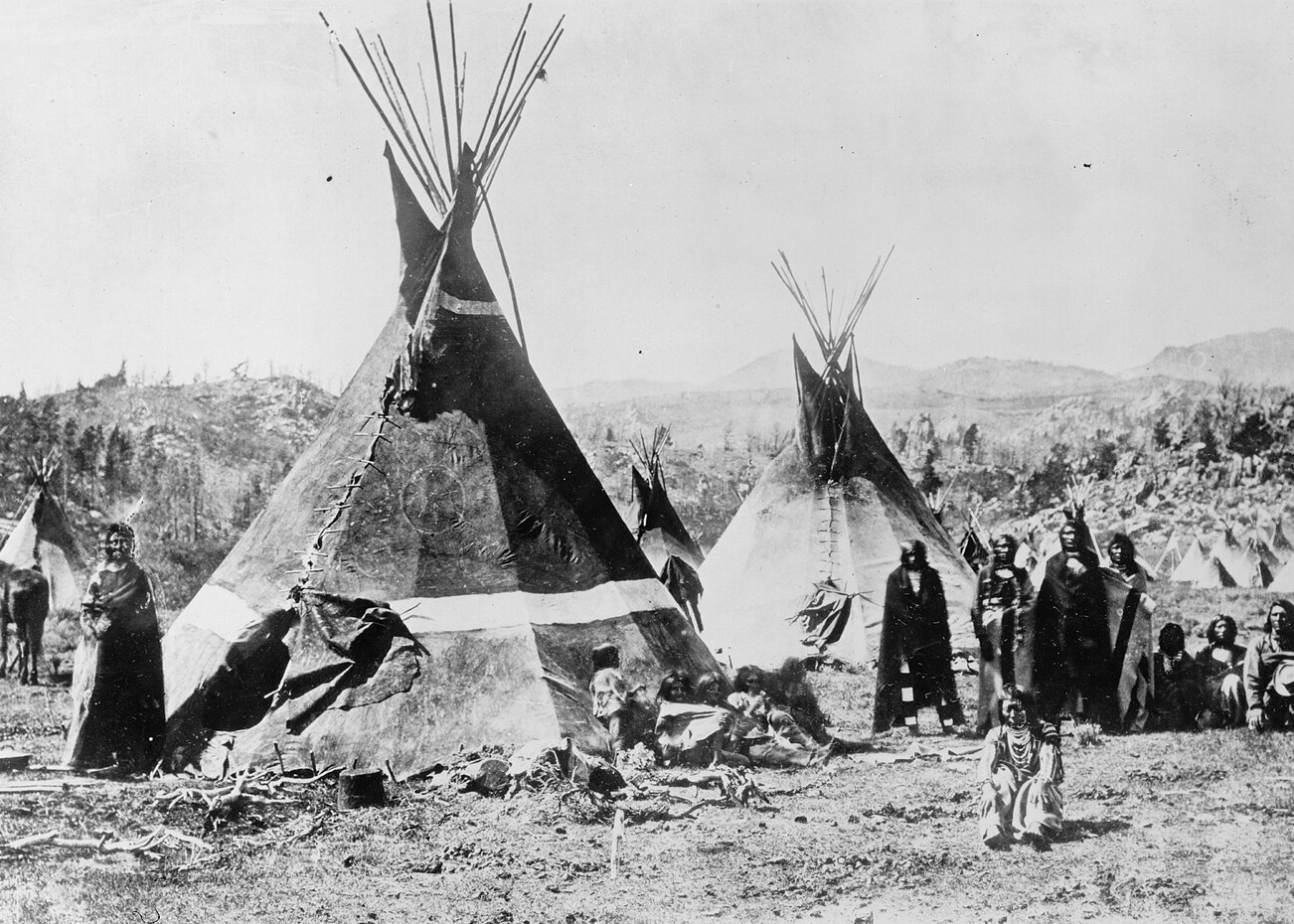 W. H. Jackson, Wikimedia Commons
W. H. Jackson, Wikimedia Commons
Tailored Clothing Evidence
The bone needles found suggest the production of warm, tailored clothing. This included fur trim and specific cuts, important in cold climates. And clothing was not just practical but possibly decorative.
 Primitive Stone Age cooking fish (kids) by Primitive Stone Age
Primitive Stone Age cooking fish (kids) by Primitive Stone Age
Bones From Small Carnivores
Needles made from small carnivores may have been preferred for their shape and density. Fine limb bones allowed for precise shaping. This was a deliberate choice, rather than just using whatever was nearby.
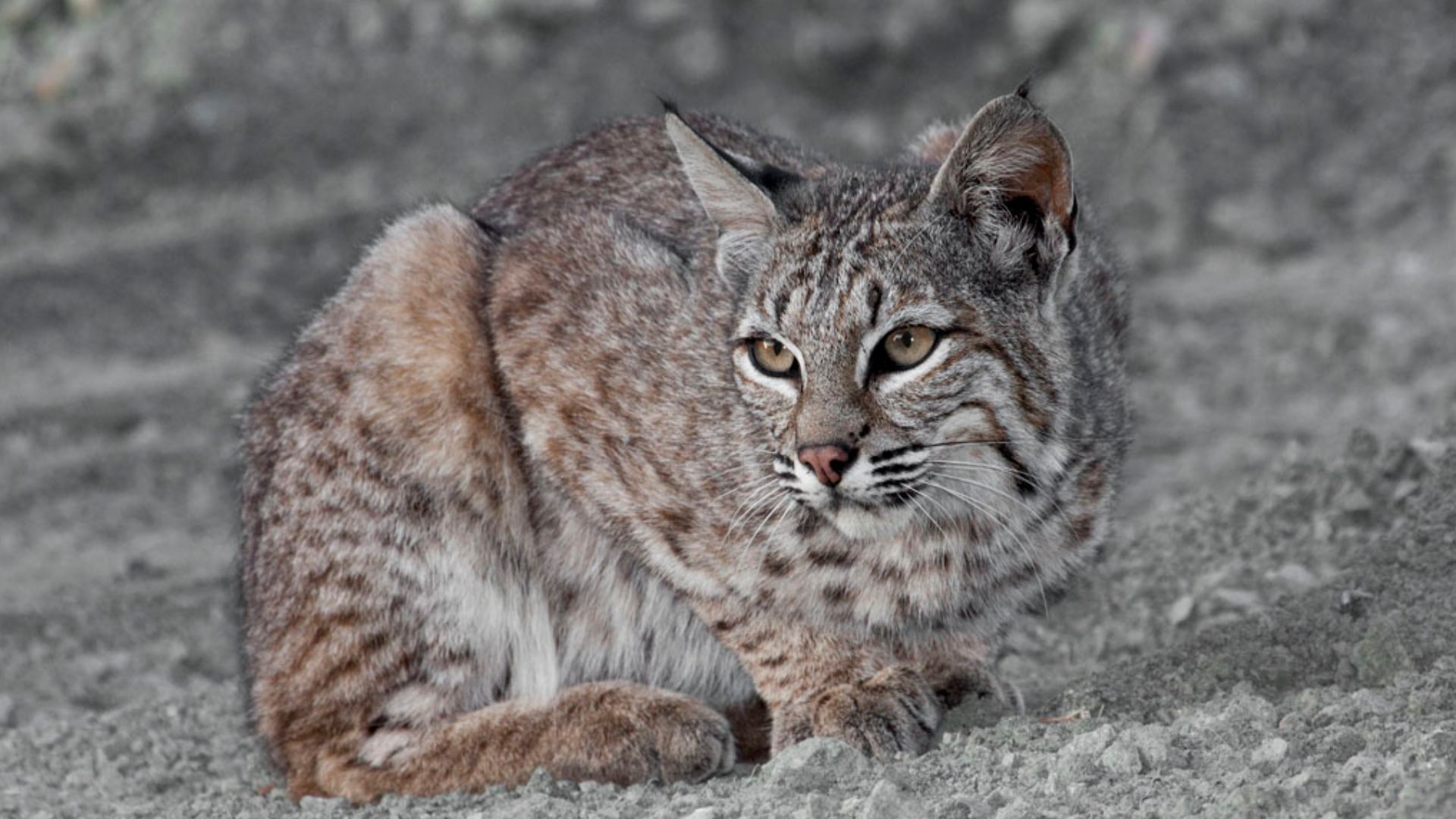 marlin harms, Wikimedia Commons
marlin harms, Wikimedia Commons
Household Chores
Different areas of the site served different purposes: butchering, sleeping, crafting. Such spatial organization hints at planning and social structure. It also suggests Clovis people at La Prele weren’t warriors passing through, they were families surviving and creating. That domestic picture changes how we see ancient hunter-gatherers.
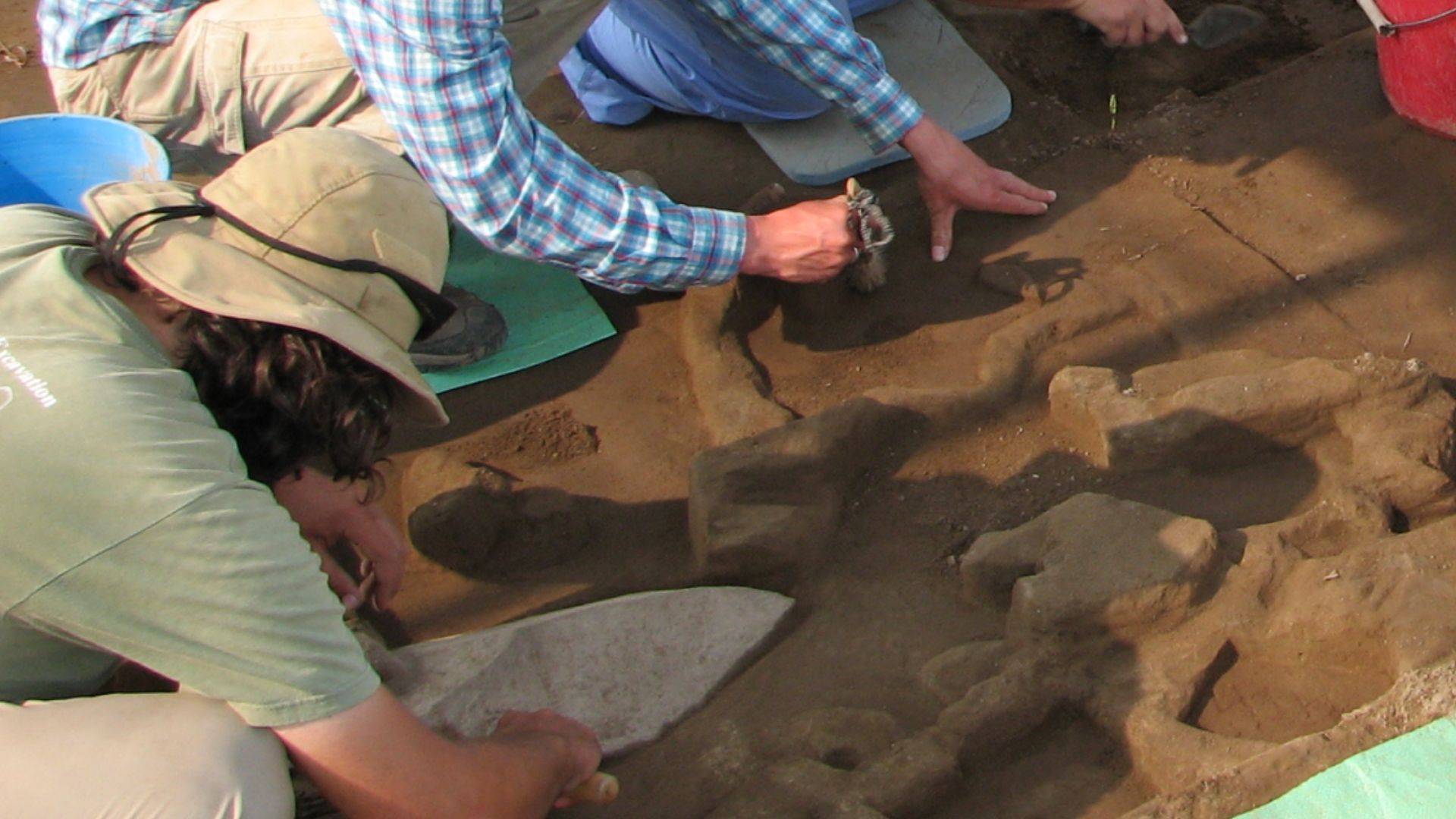 Bureau of Land Management, Wikimedia Commons
Bureau of Land Management, Wikimedia Commons
Long-Term Study
Excavations at La Prele have spanned decades, with more to come. One final field season is planned to explore a promising new cluster. Archaeologists hope for a complete Clovis point, or even more ornaments.
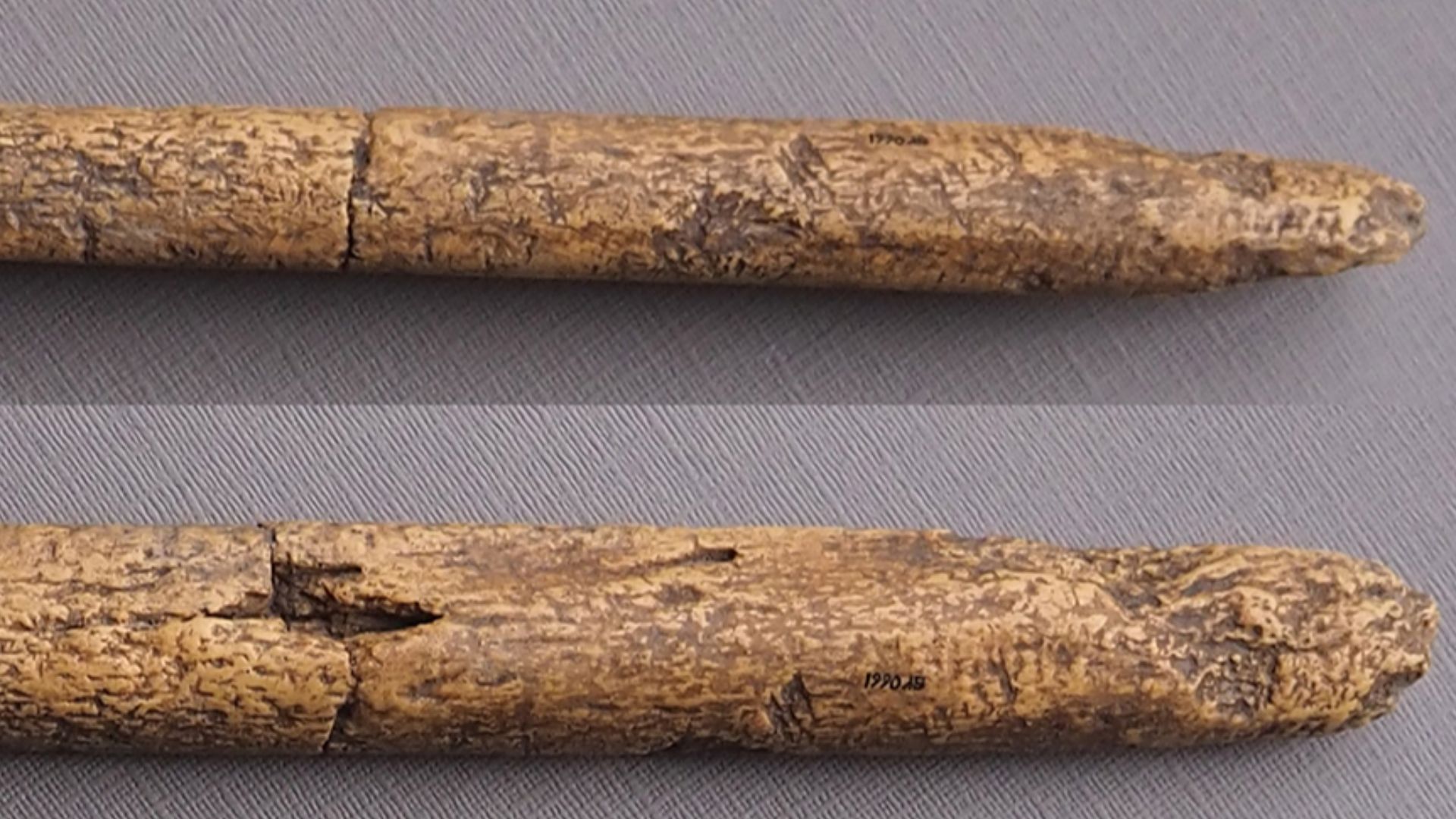 R. Scott Byram ,Kent G. Lightfoot,Jun Ueno Sunseri, Wikimedia Commons
R. Scott Byram ,Kent G. Lightfoot,Jun Ueno Sunseri, Wikimedia Commons
More Than Mammoths
La Prele reminds us that Clovis people didn’t just hunt megafauna. They used hares, foxes, cats, and more. Their diets and technologies were broader than previously assumed.
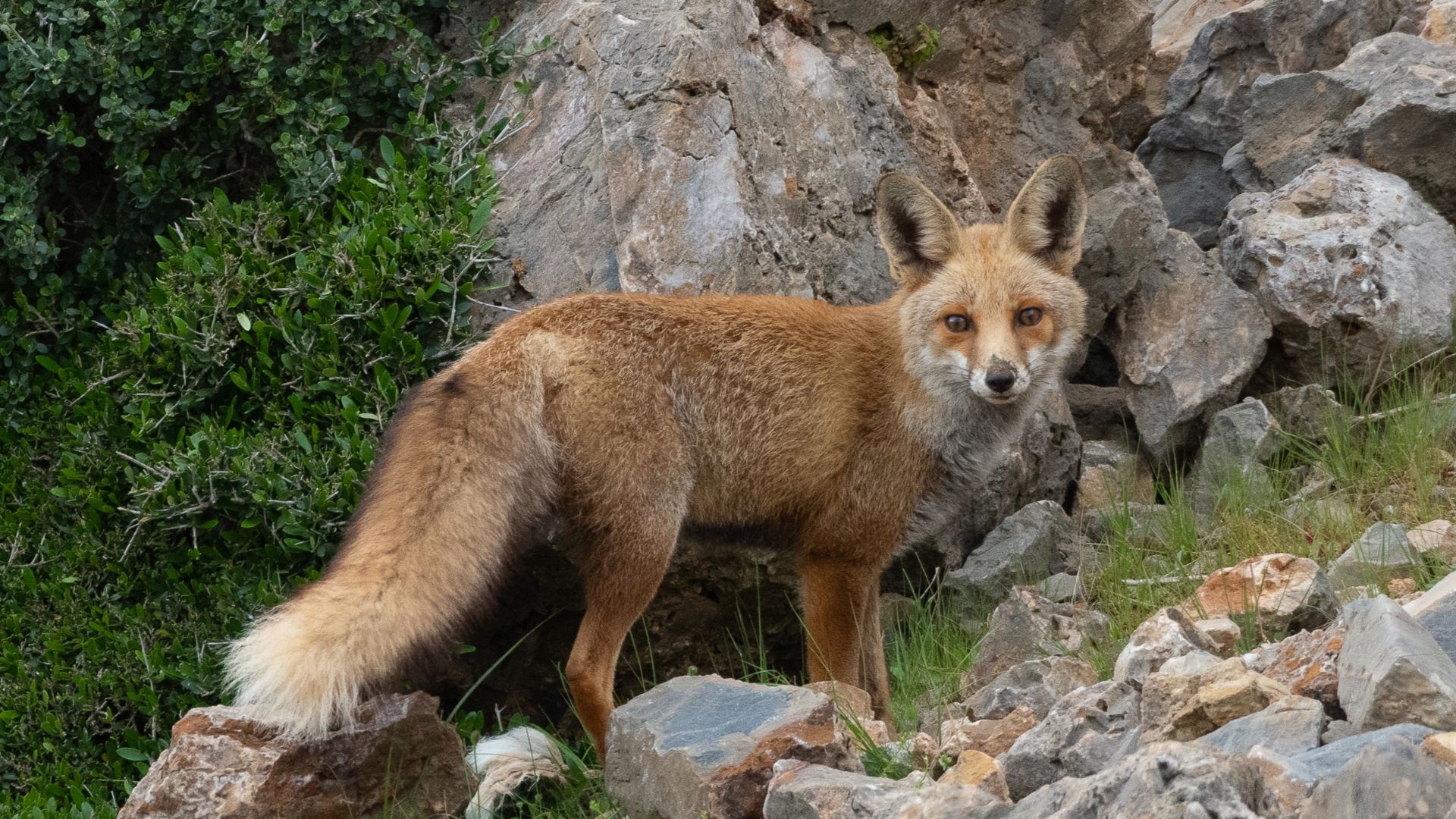 El Golli Mohamed, Wikimedia Commons
El Golli Mohamed, Wikimedia Commons
Beads As Status Symbols
Beads likely served as personal ornaments, maybe indicating status or group identity. Finding one shows that Clovis people had symbolic culture. It wasn’t just about survival, they valued beauty and meaning.
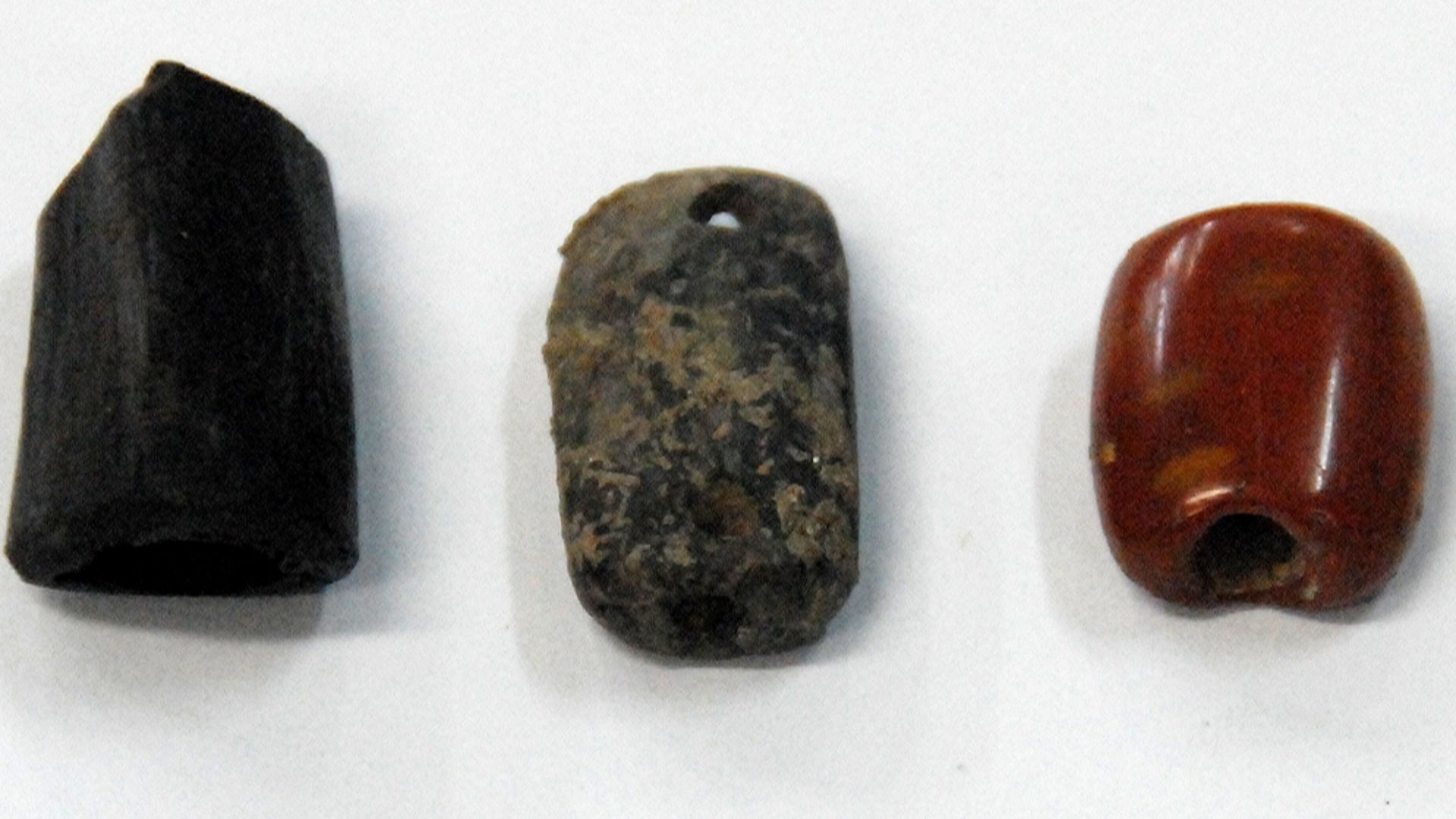 Patrick Nunn, Wikimedia Commons
Patrick Nunn, Wikimedia Commons
Tiny But Mighty
Before La Prele, bead-making was assumed but never proven in Clovis sites. This one artifact changes that narrative, and fills a major gap in North American archaeological records. It also provides a concrete link between Old and New World bead-making traditions.
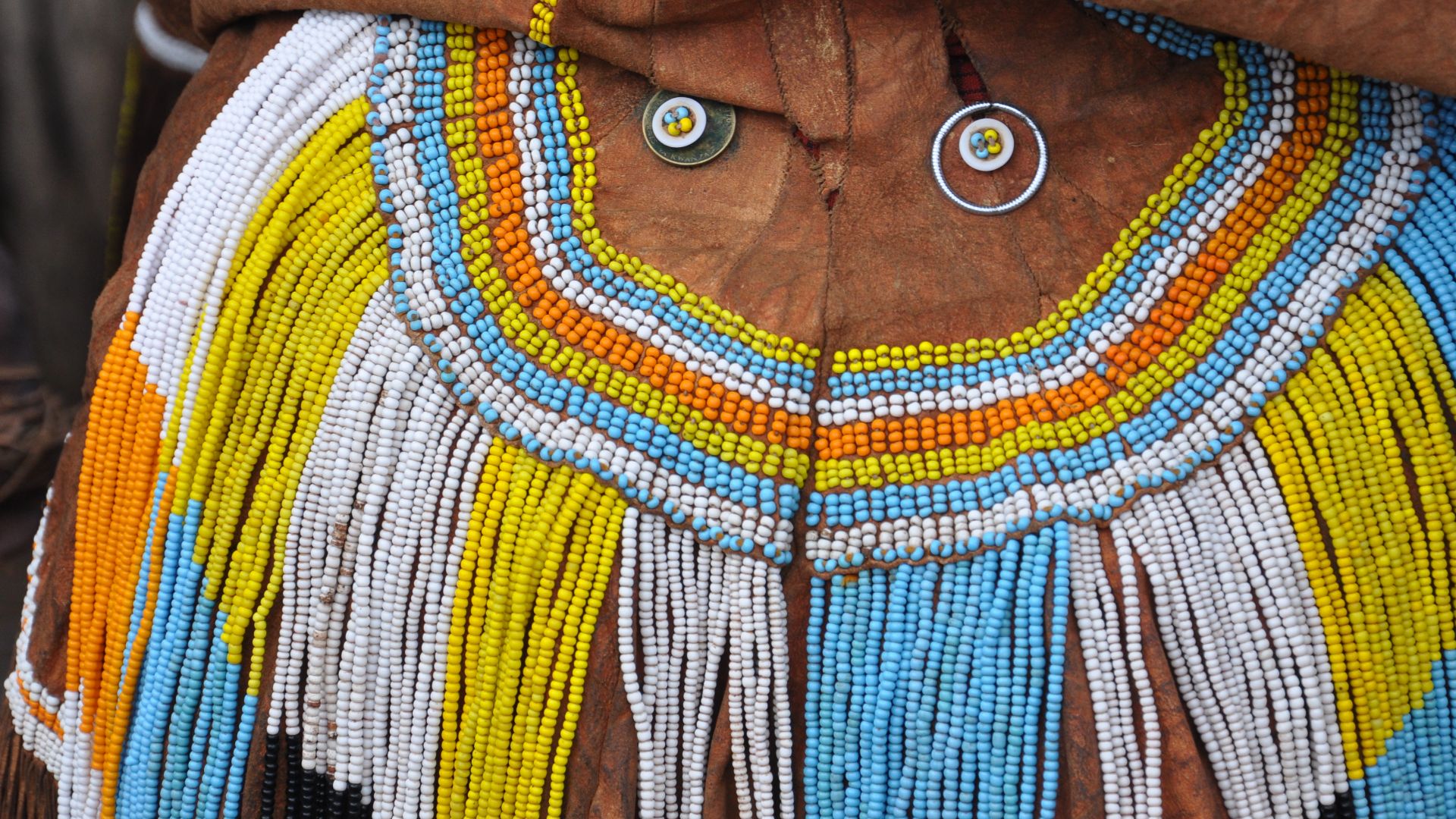 Kathy Gerber (kathleen.gerber), Wikimedia Commons
Kathy Gerber (kathleen.gerber), Wikimedia Commons
Future Work
Ongoing studies will examine site layout, family life, and seasonal movements. Researchers want to know how these people lived day to day.
A Site Like Pompeii
La Prele is unique because it’s not just where a mammoth died. It’s where people lived, worked, and expressed themselves. One archaeologist compared La Prele to Pompeii, calling it a pristine record of Clovis life. That’s extremely rare in open-air North American sites. It’s a frozen moment from 13,000 years ago.
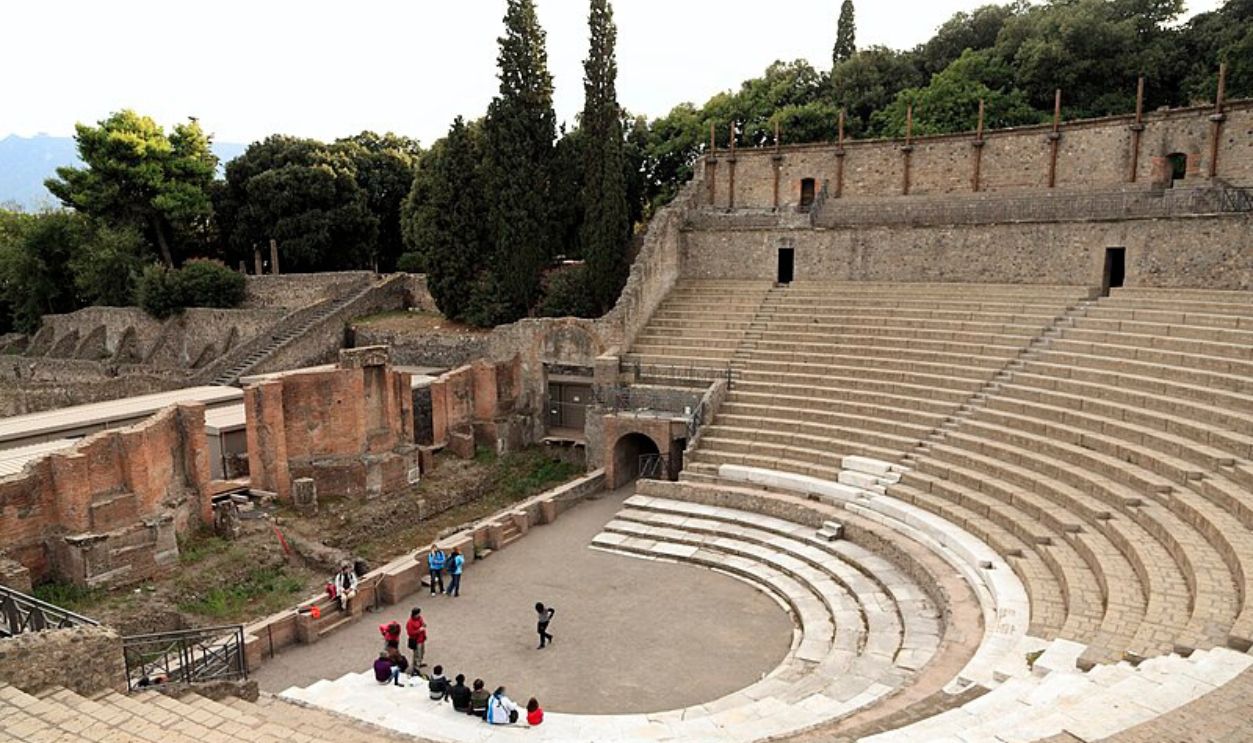 Falk2, CC BY-SA 4.0, Wikimedia Commons
Falk2, CC BY-SA 4.0, Wikimedia Commons
Global Significance
La Prele isn’t just important for American archaeology, it matters globally. It contributes to our understanding of human migration, culture, and technology. The Clovis bead, in particular, connects continents and time periods.
 Background image: NASA
this version: Nilfanion, Wikimedia Commons
Background image: NASA
this version: Nilfanion, Wikimedia Commons
Rare Among Rarities
Sites like La Prele are one in a million. Beads like the one discovered are even rarer. Together, they make La Prele a crown jewel in American prehistory.
 Sue Hutton, CC BY-SA 2.0, Wikimedia Commons
Sue Hutton, CC BY-SA 2.0, Wikimedia Commons
Wyoming’s Hidden Gem
Hidden beneath layers of Wyoming soil, La Prele continues to surprise and inspire. Each year reveals something new about the oldest Americans. It’s a treasure chest of Ice Age history, still being unlocked.
 http://www.cgpgrey.com, CC BY 2.0, Wikimedia Commons
http://www.cgpgrey.com, CC BY 2.0, Wikimedia Commons
You May Also Like:
The Daily Lives Of Prehistoric Humans
These Cave Markings Changed What We Know About The Neanderthals


